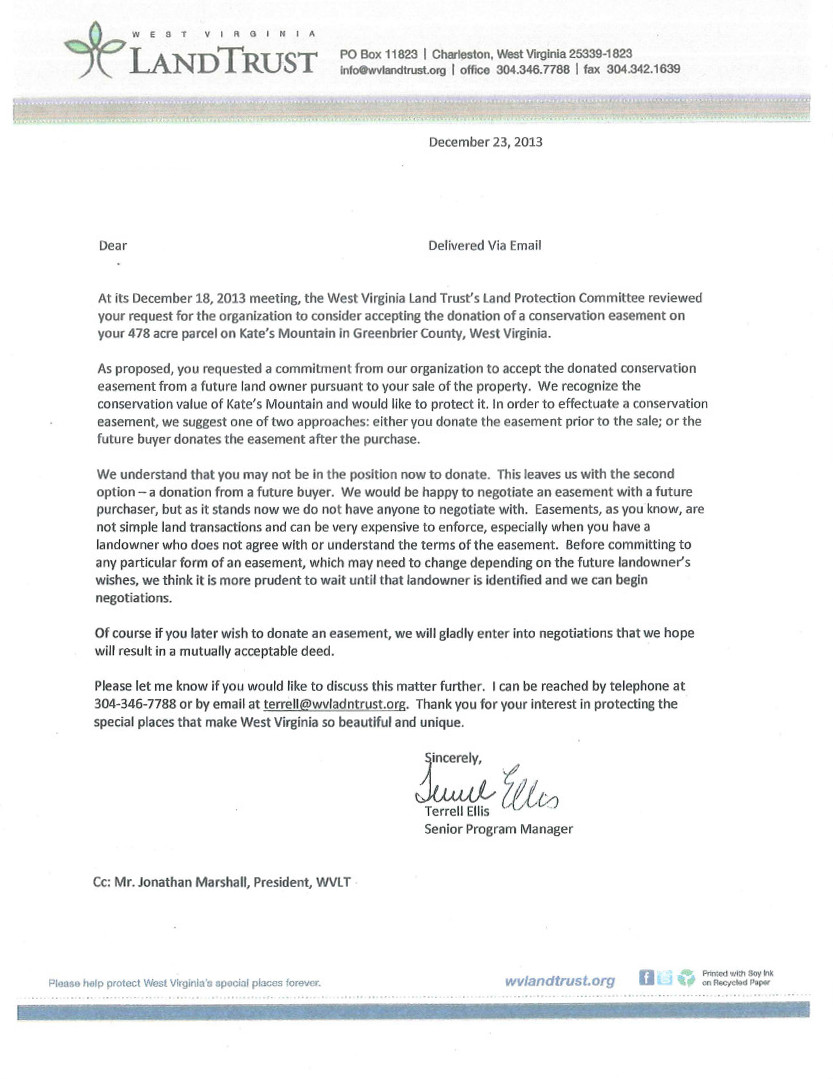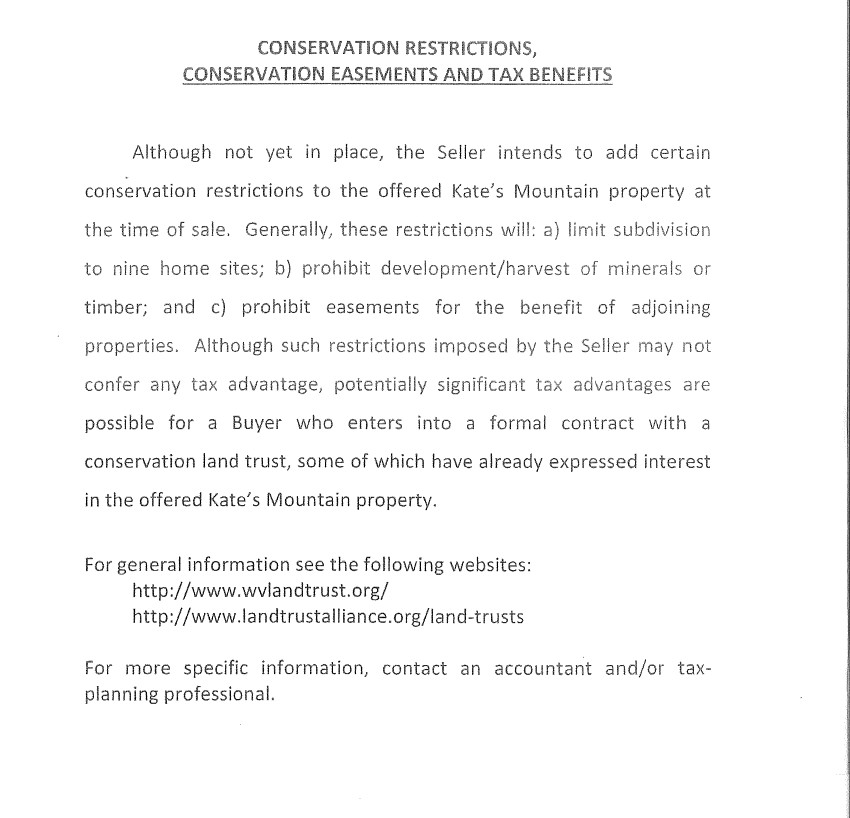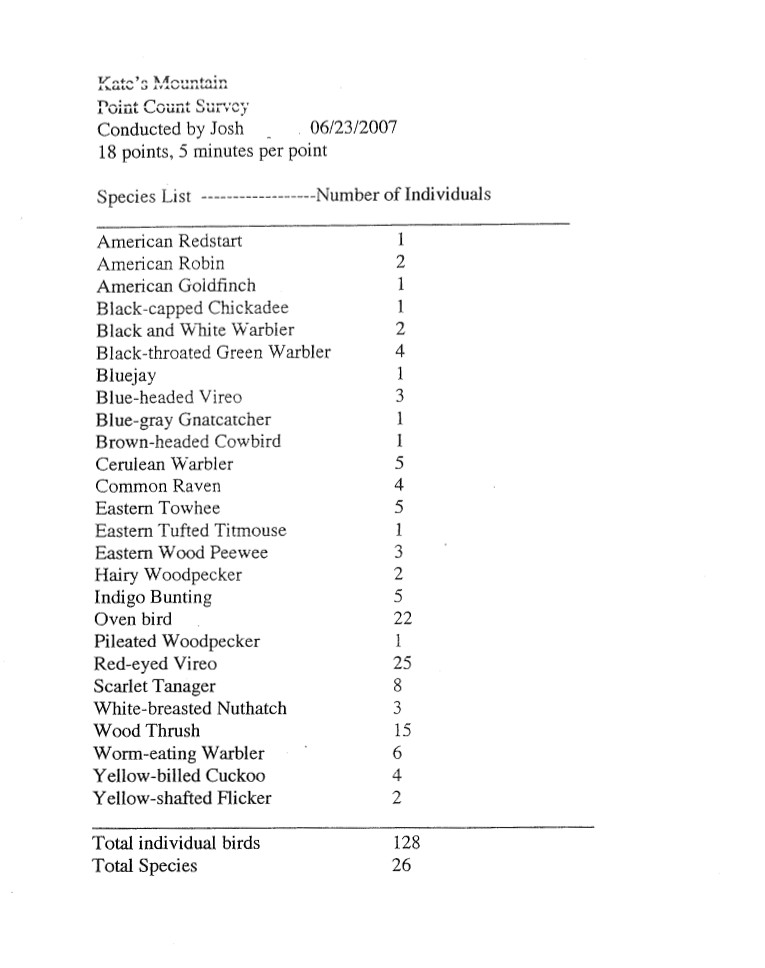![20140519185019148524000000-o[1]](http://katesmtn-wv-conservation.com/wp-content/uploads/2016/04/20140519185019148524000000-o1.jpg) Find below the following articles:
Find below the following articles:
- Department of Natural Resources statement concerning rare flowers
- West Virginia Land Trust statement concerning their interest in this property
- Tax implications of conservation easements
- Bird study from Kate’s Mountain
For further information about conservation, easements and tax benefits, please visit the following websites:
- West Virginia Land Trust
- The Nature Conservancy
- Land Trust Alliance
- West Virginia Highlands Conservancy
Also of significant importance is the fact that Congress passed the enhanced conservation tax benefits package, in 2015, making conservation all the more economical.
The tax incentive was made permanent in 2015 and increases the benefits to landowners in the following ways: Making the deduction a donor can take for donating a conservation easement to 50%, from 30%, of his or her annual income. Also extending the carry-forward period for a donor to take a tax deduction for a conservation agreement to 15 years from 5 years, and allowing qualifying farmers and ranchers to deduct up to 100% of their income, increased from 50%.
Why conservation? What are conservation easements? How does a landowner sort it all out? These big questions are natural responses that a member of the public, or a buyer might have.
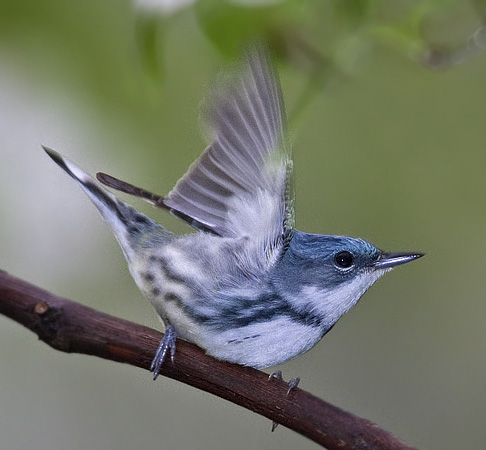 Conservation is a subject as large and vast as the human history of settled living and the propagation of plants and the husbandry of animals, beginning roughly 10,000 years ago. Also possibly in basic form reaching back into the paleolithic, 10,000 – until?
Conservation is a subject as large and vast as the human history of settled living and the propagation of plants and the husbandry of animals, beginning roughly 10,000 years ago. Also possibly in basic form reaching back into the paleolithic, 10,000 – until?
It is the care and management of the land both wild and domestic. It is the knowledge that human society has a duty to care, or be a steward of, the world as a consequence of the knowledge of how deeply human society has and does and will surely affect it. It is the need to moderate our behavior, to show judgement and farsightedness. It is to be other directed~including more than just human beings in the others who deserve our attention and care. It is to grant standing, as it were, to the rest of creation.
Conservation seeks to honor and protect all members of creation, ideally without regard to the economic value to human society of that creation. Some will argue that when people need work there is no time to talk about conservation. Clearly people need work but they also need to live in their homelands for many generations to come. That future will surely be a better one if those landscapes are taken care of.
For the more religious minded, or spiritually touched, there can be a sense that CREATOR AND CREATION have a lot in common, if not being exactly the same thing.
From a more technical point of view it is known that larger areas that can be set aside for preservation are more valuable than broken up smaller ones. It is known that species need certain habitats to live in with specific qualities that only that type of habitat, including the size of that habitat, can provide. Evolved over great periods of time, the relationships between plants and animals, and their habitat, can not be disturbed too greatly or too quickly or else they will diminish or cease to exist. Humankind’s disruption of most places it exits poses a clear risk to virtually the whole rest of creation, and therefore itself. In fact preeminent biologist and conservationist E.O. Wilson of Harvard University has written a recent book arguing that in order to stem the tide of what has been called the ”sixth extinction” that humankind should conserve roughly half of the worlds remaining natural habitats in their present state, that is whole and intact. Clearly an ambitious goal but coming from such an expert as Wilson probably a wise one. A course of action that if achieved would go a long way to protecting our own long term evolutionary prospects, not to mention keeping the world the amazing diverse collection of beings that it is today.
Fractured habitats in today’s world provide clear evidence that many species are unable to reproduce and thrive in them. Preserving large existing habitats, like Kate’s Mountain, including the 5,100 acre Greenbrier State Forest, making a contiguous fairly undisturbed area of 8,700 acres, is a very good thing for nature and the rare plants, animals, and birds that thrive there. People live in towns and cities or on farms, plants and animals live in HABITATS. To protect plants and animals people must protect their habitats first and last. To continue to live with the flora and fauna that have been here much longer than we have will take real effort by today’s generation. Conservationists believe that this is the right path to take, the ethical choice.
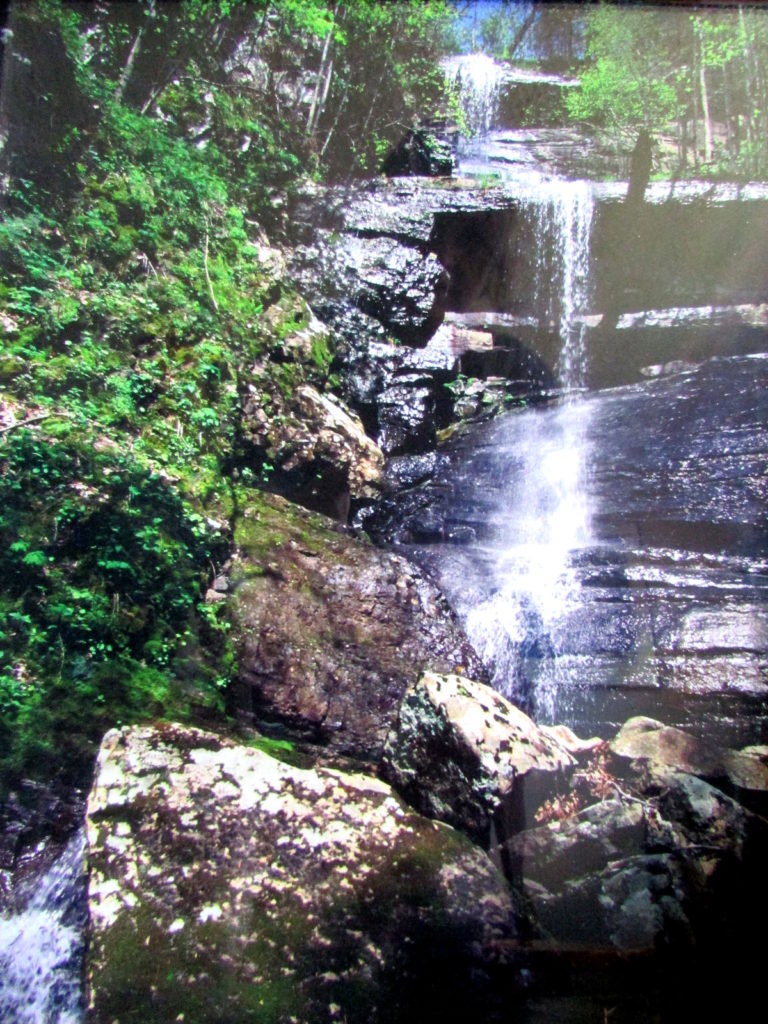
Conservation also seeks to preserve natural and wild places for humans so that they may enjoy the powerful qualities of nature, and be renewed by them, and find depths of experience that the busy world rarely allows and be expanded by them. So that in quiet places we may find ourselves and remember what is most important to us, what is most real in life.
To receive that knowledge many find wild places essential for finding that source of things. This may be the reason many of histories most religious persons went to the wilderness to find what they could not find anywhere else.
Conservation thinks about the future and tries to act like future generations will surely wish that we would have.
Conservation creates value ~ in that every day more and more people are learning to enjoy the benefits of natural healing methods, diets, and the healing qualities of time spent in nature. It is a reflection of a changing culture. In the face of a world that has begun to scare people, in that light, new recognition’s are arriving daily- how fragile it all is, how precious, how easily we could {and are} damaging the world before we have appreciated and understood it.
Places with more preserved land are more highly valued than those without. While taking a conservation approach to a parcel of land may be an initial sacrifice in monetary terms, the world will be enriched by it in time, more and more as time passes. Land and property values will both be protected and increased by conservation in a given area.
We could and maybe should end our infatuation with short term personal gain and instead think of the welfare of future generations, of our moral obligation to values and principles which will protect and create value for the whole of the world: birds, bugs, the climate, clean water, peace and quiet, wilderness, bears, and young people sitting around campfires able to discover the wonder of nature for themselves.
To be able to own a piece of land that is a wilderness is a special opportunity, with special challenges to be sure, but with the chance to have a retreat that can provide the type of peace and spiritual nourishment that is so rare. The type of asset that will very surely become more valuable as time goes by, and at the same time by agreeing to limits to commercial activity, provide a service to the general public.
~Conservation Easements~ are binding legal agreements entered into by a landowner and conservation agency which seeks to preserve certain valued assets of those properties for the general public good. These included rare species, view-sheds, water quality, limitations on development, or keeping land working as farmland or ranch land or timberland, and not sprawling development, among others. The development values that are given away are, upon a variety of factors, returned in part to the landowners by the provision of Federal and State tax benefits. Conservation easements are binding contracts that will stay with the land at issue forever.
For more authoritative information please see the above links to these conservation groups. Conservation easements are one method among others to create incentives for the conservation of private land and are certainly a reasonable use of resources given the limits that the public sector have in an era of tight and shrinking public budgets.
The above description is, of course, a layman’s view and any prospective party should research the subject directly from the sources provided above or others and contact a knowledgeable legal representative.
“Proposed” Deed Restrictions (CCRs)
These terms and conditions have not been recorded and could possibly be amended by mutual agreement.
This conveyance shall be strictly subject to the following restrictions:
- Use of the property shall be limited to no more than nine {9} single-family homes on a minimum of 50 acres each.
- There shall be no oil, gas, or other mineral extraction from the property, including extraction without disturbing the properties surface, i.e., from adjoining properties.
- There shall be no commercial timbering of the property, but timbering for forest health, i.e. disease, overgrowth, shall be permitted. Timbering also for road construction, utility easements, and for the clearing of home sites, and for timber supply for the construction of homes shall be permitted. Timber shall also be allowed to be taken for the provision of home heating – wood stoves.
- Utility easements shall be granted to serve homes built on the property, but no easements [not including existing easements] shall be granted through, across, or under the property for the benefit of any joining or adjacent, or any other property.
- Hunting shall be permitted according to West Virginia law, and by any future agreement of the property owner or owner[s].
- Property is only for sale to private persons or person. Property may not be leased to, lent to, or made use of for any commercial activity, or by any commercial entity, other than those herein stated. These terms shall endure in perpetuity.

